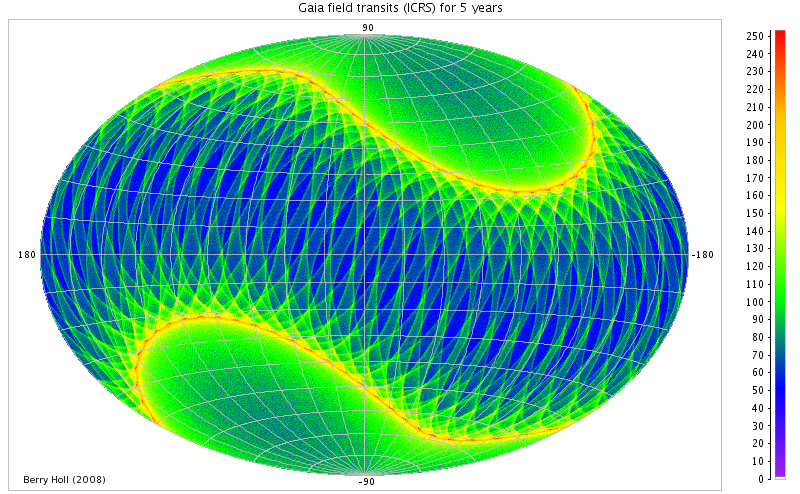iow_20120312 - Gaia
Image of the Week |
Gaia scanning-law movie |
 |
|
This movie (46.8M) shows the number of field transits (so for both fields of view).
The movie has three intervals, interesting features to note are:
The movie was made by scanning the central positions of each pixel of a healpix map of depth 8 (3.1 million pixels) with the scanner in AGISLab and taking the number of SM-observations (of which there is just 1 per field transit). Then the map was projected into a Hammer-Aitoff plot using the graphics library in GaiaTools. The picture, in particular, shows the number of field transits in ICRS after 5 years. Copyright: Berry Holl [Published: 12/03/2012] |
- Removed a total of (3) style text-align:center;
- Removed a total of (4) style text-align:justify;
- Removed a total of (1) border attribute.
- Removed a total of (1) cellpadding attribute.
- Removed a total of (1) cellspacing attribute.
Image of the Week Archive
- Removed a total of (1) border attribute.
- Removed a total of (1) cellpadding attribute.
- Removed a total of (1) cellspacing attribute.








































 Sign in
Sign in
 Science & Technology
Science & Technology
